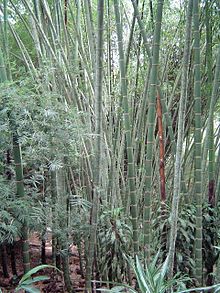
Cortaderia is a genus of South American and Central American plants in the Poaceae grass family.

Chusquea is a genus of evergreen bamboos in the grass family. Most of them are native to mountain habitats in Latin America, from Mexico to southern Chile and Argentina.

The Bambuseae are the most diverse tribe of bamboos in the grass family (Poaceae). They consist of woody species from tropical regions, including some giant bamboos. Their sister group are the small herbaceous bamboos from the tropics in tribe Olyreae, while the temperate woody bamboos (Arundinarieae) are more distantly related. The Bambuseae fall into two clades, corresponding to species from the Neotropics and from the Paleotropics.

Mandevilla is a genus of tropical and subtropical flowering vines belonging to the family Apocynaceae. It was first described as a genus in 1840. A common name is rocktrumpet.
Arthrostylidium is a Neotropical genus of climbing bamboo in the grass family. the species are native to Central America, the West Indies, northern South America, and southern Mexico.

Rhipidocladum is a genus of New World woody bamboo in the grass family. It is found in Mesoamerica, Trinidad, and South America. The genus is characterized by having erect, non-pseudopetiolate culm leaves, numerous branchlets arising in an aspidate (fan-like) array, and by having true caryopses as fruit. The name is derived from the Greek rhipid meaning "fanlike" and clad meaning "branch".
- Rhipidocladum abregoensis - Colombia
- Rhipidocladum ampliflorum - Venezuela
- Rhipidocladum angustiflorum - Colombia, Venezuela
- Rhipidocladum bartlettii - Mexico, Belize, Guatemala, Honduras
- Rhipidocladum clarkiae - Costa Rica
- Rhipidocladum harmonicum - from southern Mexico to Bolivia
- Rhipidocladum martinezii - Mexico (Chiapas)
- Rhipidocladum maxonii - Costa Rica, Guyana
- Rhipidocladum neumannii - Argentina, Bolivia
- Rhipidocladum pacuarense - Nicaragua, Costa Rica
- Rhipidocladum panamense - Panamá
- Rhipidocladum parviflorum - Venezuela, Colombia, Perú, Bolivia, Brazil, Panamá
- Rhipidocladum pittieri - from Mexico (Michoacán) to Panamá
- Rhipidocladum prestoei - Trinidad
- Rhipidocladum racemiflorum - Mexico from Tucumán to Tamaulipas
- Rhipidocladum sibilans - Venezuela, Guyana

Pouteria is a genus of flowering trees in the gutta-percha family, Sapotaceae. The genus is widespread throughout the tropical Americas, with outlier species in Cameroon and Malesia. It includes the canistel, the mamey sapote, and the lucuma. Commonly, this genus is known as pouteria trees, or in some cases, eggfruits.

Gynerium is a monotypic genus of Neotropical plants in the grass family, native to Mexico and Colombia, Central America, South America, and the West Indies. It is classified in its own tribe Gynerieae.
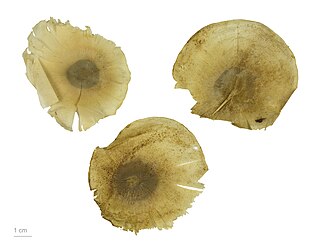
Aspidosperma is a genus of flowering plant in the family Apocynaceae, first described as a genus in 1824. It is native to South America, Central America, southern Mexico, and the West Indies.

The wedge-tailed grass finch is a species of bird in the family Thraupidae; it was formerly placed in the Emberizidae. It is found in Argentina, Bolivia, Brazil, Colombia, Costa Rica, Ecuador, French Guiana, Guyana, Panama, Paraguay, Peru, Suriname, Uruguay, and Venezuela.
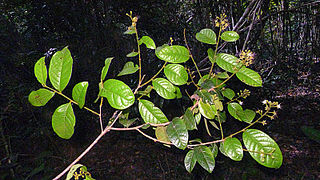
Hirtella is a genus of 110 species of woody trees in family Chrysobalanaceae. It was first described as a genus by Linnaeus in 1753. Hirtella naturally occurs in tropical forests throughout Latin America, the West Indies, southeast Africa, and Madagascar. The flowers are mainly pollinated by butterflies.

Syngonanthus is a genus of flowering plants in the family Eriocaulaceae. It is native to tropical Africa and to Latin America.
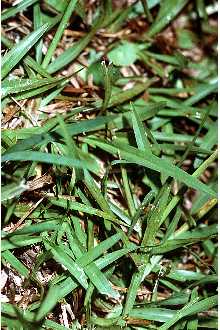
Axonopus is a genus of plants in the grass family, known generally as carpet grass. They are native primarily to the tropical and subtropical regions of the Americas with one species in tropical Africa and another on Easter Island. They are sometimes rhizomatous and many are tolerant of periodic submersion.

The following outline is provided as an overview of and topical guide to South America.

Olyra is a genus of tropical bamboos in the grass family. It is native primarily to the Western Hemisphere, with one species extending into Africa.
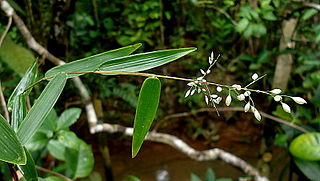
Parodiolyra is a genus of Neotropical plants in the grass family.
- Parodiolyra aratitiyopensisJ.R.Grande - Venezuela (Amazonas)
- Parodiolyra colombiensisDavidse & Zuloaga - Colombia (Caquetá)
- Parodiolyra lateralis(J.Presl ex Nees) Soderstr. & Zuloaga - Nicaragua, Costa Rica, Panama, Colombia, Venezuela, Guyana, Suriname, Ecuador, Peru, Brazil
- Parodiolyra luetzelburgii(Pilg.) Soderstr. & Zuloaga - Brazil, Colombia, Venezuela, Guyana, Suriname, French Guiana
- Parodiolyra micrantha(Kunth) Davidse & Zuloaga - Brazil, Colombia, Venezuela, Guyana, Suriname, French Guiana, Peru, Bolivia, Argentina, Paraguay
- Parodiolyra ramosissima(Trin.) Soderstr. & Zuloaga - Brazil (Bahia)

Homolepis is a genus of Neotropical plants in the grass family. They are native to Mexico, Central and South America, and the West Indies.

Chomelia is a genus of flowering plants in the family Rubiaceae. It is native to Mexico, Central America, the West Indies, and much of South America as far south as Argentina.
Ximena Londoño de la Pava is a Colombian botanist, specializing in agrostology. She has done extensive research on the bamboo genus Guadua in South America and Central America.
